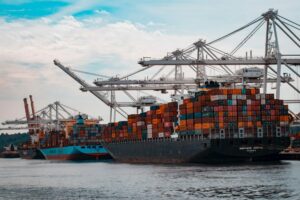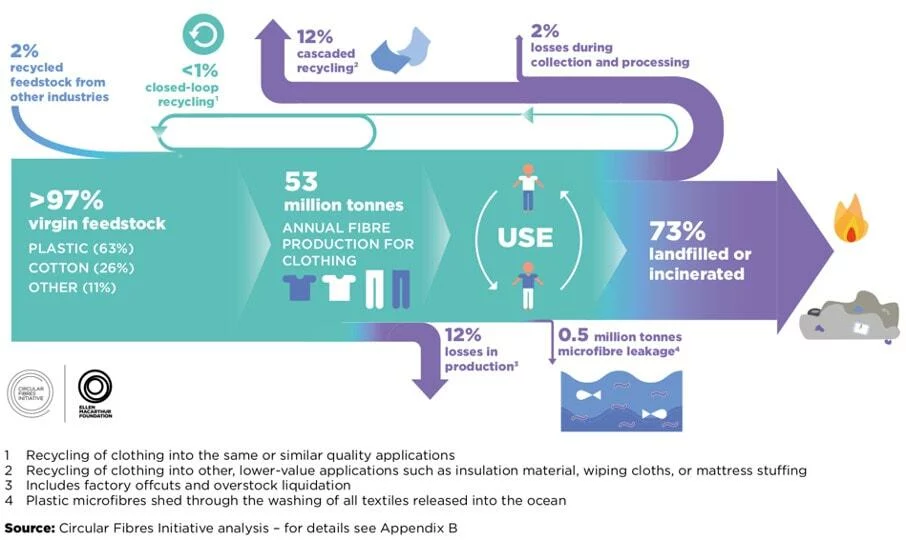Is eco-friendly fashion possible?
As sports enthusiasts, we take infinite pleasure in surpassing ourselves on the playgrounds that the planet offers us. In the mountains, forests, oceans or in white water. But like you, we see that these ecosystems are deteriorating rapidly. So we created Wolbe, to imagine a new standard A brand that offers more freedom to your wardrobe but without compromising the planet. This is our way of actively committing ourselves to the protection of the environment.
Eco-responsible fashion does not exist on a global level. Textile-clothing has a heavy impact on the planet
- 98 million tonnes of NON-renewable resources are consumed each year. This is oil, which is needed to manufacture polyester, polyamide (nylon and elastane). But also fertilisers and chemical elements used to create, dye and finish fabrics
- 1.2 billion tonnes of CO2 are released, more than sea and air traffic combined
- 500,000 tonnes of micro plastics are released into the oceans (the equivalent of 50 billion plastic bottles)
And these data will deteriorate further by 2050 if current trends are not changed...
The picture is bleak. But all consumer goods industries pollute, degrade natural resources and generate significant waste.
How did we get here? 4 different factors explain these figures
1. it is first and foremost a reflection of the world's "geography
7.7 billion people wear clothes! To protect themselves, feel good or express their personality. In fifteen years, the world's population has grown by 25%, and its standard of living has improved significantly. They have more means to consume, and do not deprive themselves of this.
The location of natural resources, production sites (cheap labour) and consumption areas are not aligned. So the raw material, the yarn or polymer beads, the raw fabric, the dyed fabric, the semi-finished garment and the finished garment have to be transported around the world all the time! Imagine the millions of tons of CO2 spent in this transit transport alone...
If we take the example of a pair of jeans, here are the likely steps it will take. The cotton is grown in Pakistan, Korea or West Africa. Then it is shipped to Italy to be woven into large denim fabrics. The fabrics will be sent to Asia to be cut and assembled by cheap labour (a worker earns 50$ per month in Bangladesh or 77$ in Pakistan). The semi-finished jeans will be "sanded" in Turkey, the international champion of faded jeans. Finally, the finishing touches (zips, rivets, etc.) can be done in Europe.

2. it is then linked to manufacturing processes (fabrics + clothing) that are far from clean
70% of global textile production is derived from oil (polyester, polyamide -nylon, elastane-) ! And the trend has been growing inexorably since 1995 (see curve below). Very easy to manufacture (see the video on nylon you tube), the material is inexpensive, more resistant than cotton or wool, and has interesting technical properties (hydrophobicity in particular).
The big problem is that oil is a natural, non-renewable resource that will be increasingly difficult and expensive to access. How can we extract the 70 million barrels of oil needed to produce the polyester manufactured each year?

Natural fibres can also be of concern! For example, cotton alone mobilises 20% of insecticides used worldwide.
Textile and clothing is the 3rd largest water-consuming sector after wheat or rice cultivation (4% of available drinking water). The Aral Sea for example, has disappeared because of the irrigation of cotton. And it takes 10,000 litres of water to make one pair of jeans (285 showers).
Finally, to transform, dye and finish fabrics and clothing, the textile industry alone mobilises 25% of chemicals used in the world! Millions of litres of solvents, soda, dyes
3. it is mainly our uses that fuel this "change for the worse".
100 billion of clothes are produced each year. This represents a double in fifteen years, while the population has grown by +25% !
We buy some 13 kg on average per capita per year worldwide. But it is 36 kg in the USA, 23 kg in Europe (only 9.6 kg in France), 15 kg in China.
The number of times a garment is worn before it is thrown away has plummeted: 135 times today compared to 200 times 20 years ago. Under the combined effect of fast fashion (which offers up to 24 collections a year at ever lower prices) and the development of the global middle class, people are wearing the clothes they buy less. And that's only 50 times in the US and 100 times in Europe. This figure will therefore fall further.
60% of clothes are thrown away after just one year !

4. Finally, recycling is almost non-existent at the end of the chain
90% of clothing purchased ends up burned or in landfill. That's the equivalent of a garbage truck every second!
France is a "good pupil" at the global level but it is still insufficient. 38% of used clothes are collected (thanks to the 50,000 collection points). And 99.6% of them are either returned to their original state (2nd hand), or recycled into rags and shreds.
Only 1% of the materials used in the manufacture of textiles are recycled for reuse in garments.
Mainly because our clothes are not made of just one material! To increase their durability or comfort, cotton is mixed with elastane, wool with nylon, cotton with polyester. It is impossible to separate these materials by hand or mechanically at the end of their life... And today, no "chemical" process has yet been developed on an industrial scale to achieve this. But many investments and projects are now focusing on this fundamental step! And tomorrow, we may be able to produce a shirt from cotton or wool recovered from old clothes.
But also because recycling a material for reuse in clothing often degrades its quality. The long fibres that give a yarn its texture and softness are removed.

To understand (visually) the gears of this sector, we recommend three very educational documents.
A publication of theADEME (national agency for ecological transition): "fashion upside down"..
A video from Le Monde magazine (13 December 2018, 8 minutes 05 seconds) which explains "why dressing up pollutes.
A very clear infographic Refashion.fr (formerly Eco TLC to encourage textile recycling)
Eco-friendly fashion is far from being in the majority. But the textile industry has recently become aware of its contradictions, and more than any other, has begun to organise its transformation.
New bio-based materials are emerging based on corn, pineapple and hemp. Experimental treatments for separating the components of a single garment are successful
If everyone buys less but better, if everyone takes their clothes to a sorting centre or repairs their trousers before throwing them away, the trend will be reversed.
This is what we at Wolbe are aiming for. To be as environmentally responsible as possible. We explain our 4 commitments in another blog post.


